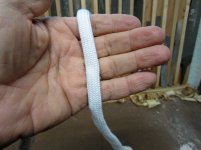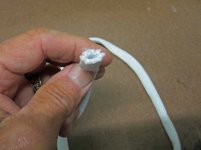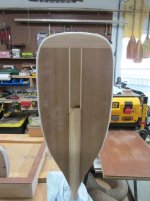I wonder if any of this could be analogous to the dimples on a golf ball?There was some reference in a John Winters article that suggested that a plain cloth paddle face might result in better paddle performance, due to the somewhat rougher texture on the face creating more turbulence during a power stroke. I haven't personally tried that yet, but there is some technical suggestion that there may be an advantage to leaving the face unfilled, as you do.
"Function of Dimples
Dimples on a golf ball are crucial for its performance. They help reduce air resistance, known as drag, and increase lift. This allows the ball to travel farther and more accurately compared to a smooth ball. The dimples create a thin layer of turbulent air around the ball, which clings to its surface and minimizes the wake behind it."



